Allen’s Danforth Theatre, now the Music Hall in 2014.
When I was a teenager, I lived in the west end of the city and did not often travel east of Yonge Street to attend movie theatres, especially those on Danforth Avenue. Because the Danforth was east of the Don Valley, I viewed it as too close to Halifax. However, I remember the old Allen’s Danforth Theatre. In the 1970s, I worked for two years near Danforth and Pape Avenues and passed the theatre many times while travelling on the old PCC streetcars on the Bloor line. Prior to the construction of the Bloor-Danforth subway in 1966, the Bloor streetcars travelled from Jane Street in the west to Luttrell Avenue in the east.
Today, the TTC only has a few remaining PCC streetcars, which are only placed in service during the summer months as tourist attractions or as rentals for special occasion. On the occasions that I saw the Allen’s Danforth Theatre in the 1970s, it was named the Titania and was screening Greek films. As I remember, the theatre had become somewhat shabby.
Until the Prince Edward Viaduct (Bloor Viaduct) was opened in 1918, the land to the east of the Don Valley, near Danforth Avenue, was mostly farmland and dusty roads. After the opening of the bridge, a streetcar line was built across it. The area ceased to be a remote suburb of the city, since it was connected to downtown Toronto. This opened the district for commercial and residential development. It was not long before the opportunities for theatres became evident.
Two entrepreneurial brothers, Jule and Jay Allen, decided to open a theatre at 147 Danforth Avenue, not far from the eastern side of the viaduct. The theatre was on the south side of the street, near the corner of Danforth and Broadview. Though the Allen brothers were young, they were not new to the theatre business. They had opened their first theatre in Brantford, Ontario in 1907. After relocating to Toronto in 1915, they opened one of the city’s great movie palaces in November 1917—the Allen Theatre at Victoria and Adelaide Streets. The theatre was later renamed the Tivoli.
For the inauguration of Allen’s Danforth, it screened the silent film, “Through the Wrong Door,” starring Madge Kennedy and John Bowers. This 50-minute silent film was accompanied by vaudeville acts featuring comedians and musicians. On the opening night, patrons were amazed by the luxurious interior of the theatre, the finest east of the Don Valley. Allen’s Danforth possessed 1600 seats and when the opening ceremonies commenced, all of them were occupied. During the next few years, the theatre flourished as the Allen brothers had negotiated exclusive rights to screen Paramount films in their movie houses. For a few years, this monopoly kept the Allen theatres profitable.
However, the Allen brothers over-extended themselves financially and in 1923, Famous Players bought the theatre chain, including the Allen’s Danforth. In 1929 it was renovated and converted to accommodate sound films. It was then renamed the Century, which mostly screened B-Grade movies and older films.
In 1934, the theatre became a part of the B&F chain, which managed theatres such as the Radio City and the Vaughan Theatres, both located near Bathurst and St. Clair Avenue West. These were two of my favourite theatres when I was a teenager. I still remember the towering sign on the Vaughan Theatre, at its pinnacle the words B&F flashing in the night sky.
In the 1970s, the old Allen’s Danforth again changed hands and commenced screening Greek films, reflecting the changing demographics of the neighbourhood. During these years, the theatre was named the Titania. I still remember the days before Greek cuisine became a familiar part of the Toronto restaurant scene. My earliest recollections of this was in the early 1970s, when I visited the Acropole Restaurant, which was on the second-floor level of 18 Dundas Street West. Because authentic Greek foods were unfamiliar to Torontonians, instead of diners being given a menu, they were instructed to enter the kitchen and point to the dishes that attracted them. How times have changed. Today, the Danforth offers some of the best Greek cuisine in the world. For a few years, the Titania Theatre was a part of this Canadian-Greek world.
In 1978, it was renamed the Music Hall and featured second-run films and live shows. However, the theatre continued to deteriorate, its doors closing in 2004.
Eventually the Century (Allen’s Danforth) was taken over by Ellipsis Leisure Retail. Renovations to the theatre required one and a half years. However, after a few years they were evicted for non-payment of rent. The Music Hall reopened it December 2011, with improved seating and sound system. It is today one of the best venues for live entertainment in the city.
The site of Allen’s Danforth Theatre, now The Music Hall
The Music Hall c. 2007
Interior of Allen’s Danforth (The Music Hall). Photo Ontario Archives.
The Music Hall in 2014
To view the Home Page for this blog: https://tayloronhistory.com/
To view previous blogs about movie houses of Toronto—historic and modern
Recent publication entitled “Toronto’s Theatres and the Golden Age of the Silver Screen,” by the author of this blog. The publication explores 50 of Toronto’s old theatres and contains over 80 archival photographs of the facades, marquees and interiors of the theatres. It relates anecdotes and stories of the author and others who experienced these grand old movie houses.
To place an order for this book:
Book also available in Chapter/Indigo, the Bell Lightbox Book Store and by phoning University of Toronto Press, Distribution: 416-667-7791
Theatres Included in the Book:
Chapter One – The Early Years—Nickelodeons and the First Theatres in Toronto
Theatorium (Red Mill) Theatre—Toronto’s First Movie Experience and First Permanent Movie Theatre, Auditorium (Avenue, PIckford), Colonial Theatre (the Bay), the Photodome, Revue Theatre, Picture Palace (Royal George), Big Nickel (National, Rio), Madison Theatre (Midtown, Capri, Eden, Bloor Cinema, Bloor Street Hot Docs), Theatre Without a Name (Pastime, Prince Edward, Fox)
Chapter Two – The Great Movie Palaces – The End of the Nickelodeons
Loew’s Yonge Street (Elgin/Winter Garden), Shea’s Hippodrome, The Allen (Tivoli), Pantages (Imperial, Imperial Six, Ed Mirvish), Loew’s Uptown
Chapter Three – Smaller Theatres in the pre-1920s and 1920s
Oakwood, Broadway, Carlton on Parliament Street, Victory on Yonge Street (Embassy, Astor, Showcase, Federal, New Yorker, Panasonic), Allan’s Danforth (Century, Titania, Music Hall), Parkdale, Alhambra (Baronet, Eve), St. Clair, Standard (Strand, Victory, Golden Harvest), Palace, Bedford (Park), Hudson (Mount Pleasant), Belsize (Crest, Regent), Runnymede
Chapter Four – Theatres During the 1930s, the Great Depression
Grant ,Hollywood, Oriole (Cinema, International Cinema), Eglinton, Casino, Radio City, Paramount, Scarboro, Paradise (Eve’s Paradise), State (Bloordale), Colony, Bellevue (Lux, Elektra, Lido), Kingsway, Pylon (Royal, Golden Princess), Metro
Chapter Five – Theatres in the 1940s – The Second World War and the Post-War Years
University, Odeon Fairlawn, Vaughan, Odeon Danforth, Glendale, Odeon Hyland, Nortown, Willow, Downtown, Odeon Carlton, Donlands, Biltmore, Odeon Humber, Town Cinema
Chapter Six – The 1950s Theatres
Savoy (Coronet), Westwood
Chapter Seven – Cineplex and Multi-screen Complexes
Cineplex Eaton Centre, Cineplex Odeon Varsity, Scotiabank Cineplex, Dundas Square Cineplex, The Bell Lightbox (TIFF)
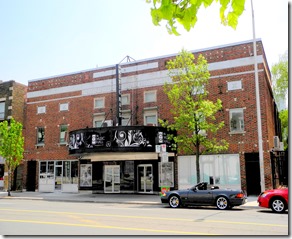
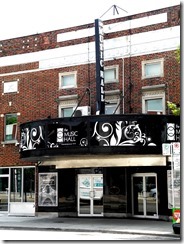
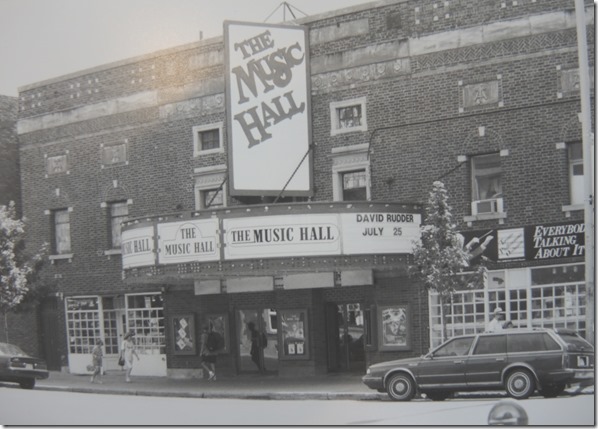
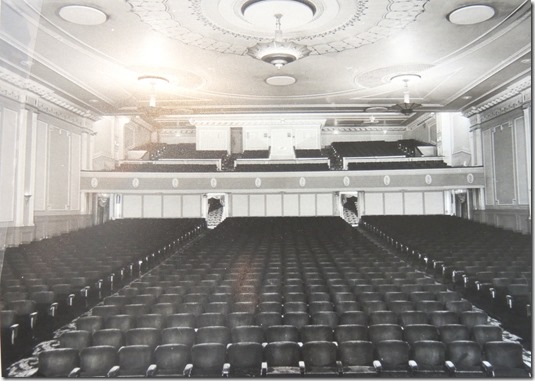
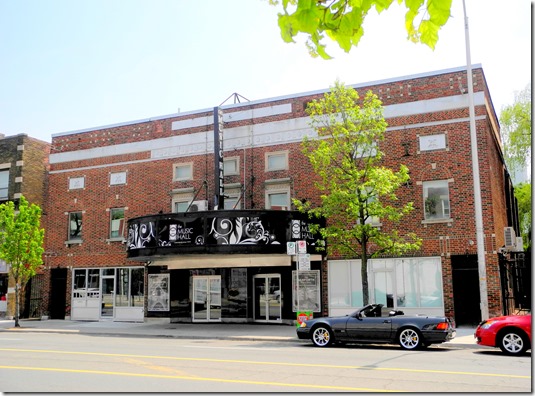
![cid_E474E4F9-11FC-42C9-AAAD-1B66D852[1] cid_E474E4F9-11FC-42C9-AAAD-1B66D852[1]](https://tayloronhistory.com/wp-content/uploads/2015/01/cid_e474e4f9-11fc-42c9-aaad-1b66d8521_thumb.jpg)

